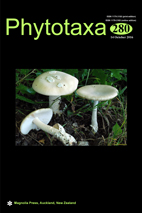Abstract
The genus Lycopus Linnaeus (1753: 21), well-known to include stoloniferous-perennial herbaceous plants of the mint family, consists of about fifteen species distributed in the Northern Hemisphere and Australia, which are distinguished by several morphological characteristics such as the dentate to pinnatifid, opposite leaves, flowers in compact, sessile axillary verticillasters, a 4–5 lobed tubular or campanulate calyx, a short subactinomorphic corolla with 2 adnate, exert stamens, and dry tetrahedral one-seeded nutlets (Henderson 1962, Moon & Hong 2006). In Northeast Asia (including northeastern China, Korea, Japan and Far East Russia), nine species are recognized, mostly occurring in low wetland areas (Murata & Yamazaki 1993, Li & Hedge 1994, Probatova 1995, Son et al. 2016).

